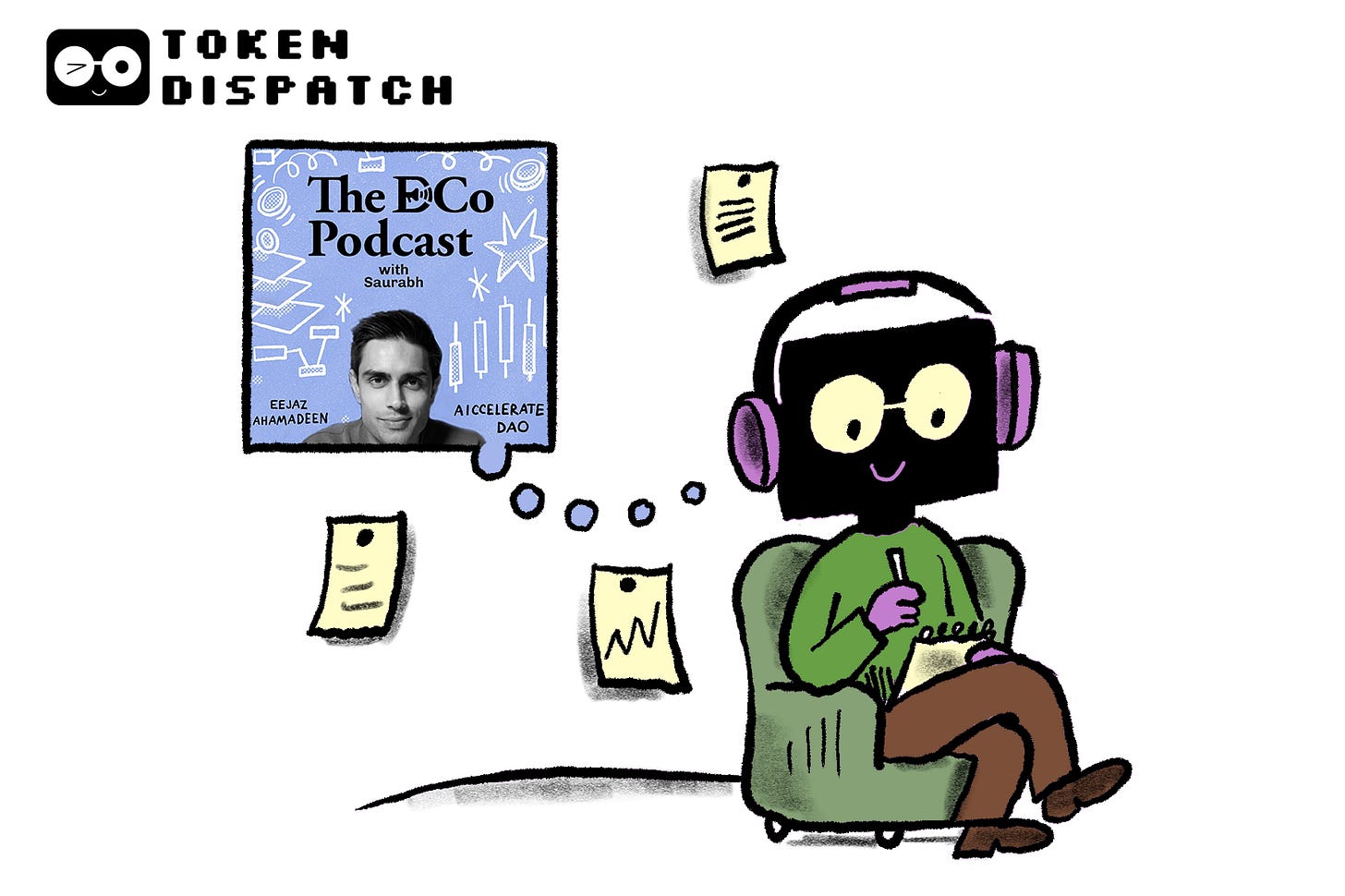Hello
A few weeks ago, a friend who runs a small export business was ranting about his frustrating work ordeal. His supplier in Vietnam had shipped the goods, but the bank transfer had been stuck at “Processing” for almost three days. As a crypto advocate, I couldn’t resist: “This wouldn’t happen if you used a stablecoin transfer.” He laughed and said, “That’s your crypto stuff. My accountant will quit if I mention wallets.”
He wasn’t wrong. It reminded me of how far our industry has come from the world it claimed it set out to improve. We keep innovating — a better wallet, a faster chain, a more trader-friendly DEX — for users who already hold tokens, understand gas fees, and don’t mind signing transactions on a repeat mode. Somewhere in this journey, crypto’s mission to connect the world turned into a competition to outdo it.
Every week, I listen to an episode of the DCo Podcast hosted by Saurabh Deshpande. It’s my weekly reminder that there are still builders out there creating products that solve real problems people face both off- and on-chain.
This week’s episode with Ejaaz Ahamadeen, on AI agents, felt like a nudge in that direction. 👇🏾
Unlock Web3 Insights with Decentralised.co
Long-form stories trusted by the best in Web3. Senior executives from 140+ enterprises trust them to keep them updated on what’s going on in crypto.
Good writing. In-depth conversations. Right in your inbox.
Subscribe to Decentralised.co
Most of the world today still runs on Excel sheets and WhatsApp groups, yet the crypto world keeps pretending that it doesn’t exist. This is precisely why adoption feels stuck.
We keep talking about new chains, bridges and consensus models as if the problem is speed or throughput. But the millions of users these crypto products target will likely come from Web2 systems that are already established and functional, not from the already minuscule crypto community.
Take users of bank APIs or payment rails, for example. More chains and bridges won’t help them adopt Web3 products. What they need are interfaces that hide the technicalities altogether. TCP/IP did that for the internet by making communication protocols invisible as we clicked, transferred data, and streamed content without thinking about the infrastructure beneath.
Today’s crypto products need an invisible layer that can abstract away the complexities. AI agents could fill this gap.
Picture a company’s treasury that runs almost entirely on autopilot. An AI agent forecasts payroll and vendor needs, shifts idle cash into on-chain yield accounts, swaps assets when exchange rates move, and generates a complete on-chain audit trail for regulators. All this runs quietly without the finance team ever touching a crypto wallet.
A few teams are already building such products. Giza Protocol’s ARMA autonomous agents already manage $2.78 billion in agentic volume, optimising yield by reallocating portfolios without any human input. Fetch.ai’s Autonomous Economic Agents (AEAs) can act, trade, negotiate and collaborate from within a blockchain-enabled ecosystem. Supply chain management, logistics, and finance are their key use cases.
Read: Bots with Benefits 🤖
The intersection of AI and crypto can result in interesting products. AI can lend coordination, while crypto provides accountability. For this to work, crypto builders will have to look beyond working in siloes.
What Ejaaz said about the focus of many crypto builders stayed with me after the episode. He pointed out how builders often keep optimising for “on-chain purity”, while most of the value still originates off-chain.
Think of logistics data, ad clicks, user interests, salary payouts, and so on. If protocols continue to ignore the legacy economy and focus solely on building composable products for a select few, they risk creating a restricted and stagnant economy.
I understand why this happens. The purity of the idea often draws many builders into tribal thinking. Permissionless access, censorship resistance, and open ownership are principles that should matter. After all, they are the first principles that help us build trustless systems. But when the pursuit of decentralisation blinds us to usability, we end up building inefficient markets.
There’s also a psychological comfort in building for the inner circle. It’s easier to build for people who already speak your language. Web3 lingo revolves around token airdrops, governance votes, protocol metrics and so on. But building for users outside the circle could mean dealing with slower cycles, regulations, and messy integrations.
This is precisely where AI agents can make a difference. Beyond just automating Web3’s existing complexities, they can eliminate them entirely. Most Web2 users don’t care whether they trade on a centralised or a decentralised exchange. They only care about their transaction settling and making money eventually.
AI agents can handle the messy middle that humans and blockchains struggle with by interpreting unstructured data, understanding intent, and deciding when to act. They can serve as excellent translators between real-world commands and digital contracts. If AI agents can master that, we will no longer see ‘on-chain’ and ‘off-chain’ as antonyms but rather as two interconnected halves of a new economy that feed off each other.
Many of today’s on-chain trading agents are still far from perfect, but they hint at what’s possible and what’s broken. If carefully designed, AI agents could help us view Web3 as infrastructure rather than a mere destination.
This will be a key maturity test for crypto builders: Can they get over their obsession with building for inner circles and start fixing the world, as the industry once promised to do?
That’s it for this week’s reflections. I’ll see you next week,
Prathik
Token Dispatch is a daily crypto newsletter handpicked and crafted with love by human bots. If you want to reach out to 200,000+ subscriber community of the Token Dispatch, you can explore the partnership opportunities with us 🙌
📩 Fill out this form to submit your details and book a meeting with us directly.
Disclaimer: This newsletter contains analysis and opinions of the author. Content is for informational purposes only, not financial advice. Trading crypto involves substantial risk - your capital is at risk. Do your own research.






